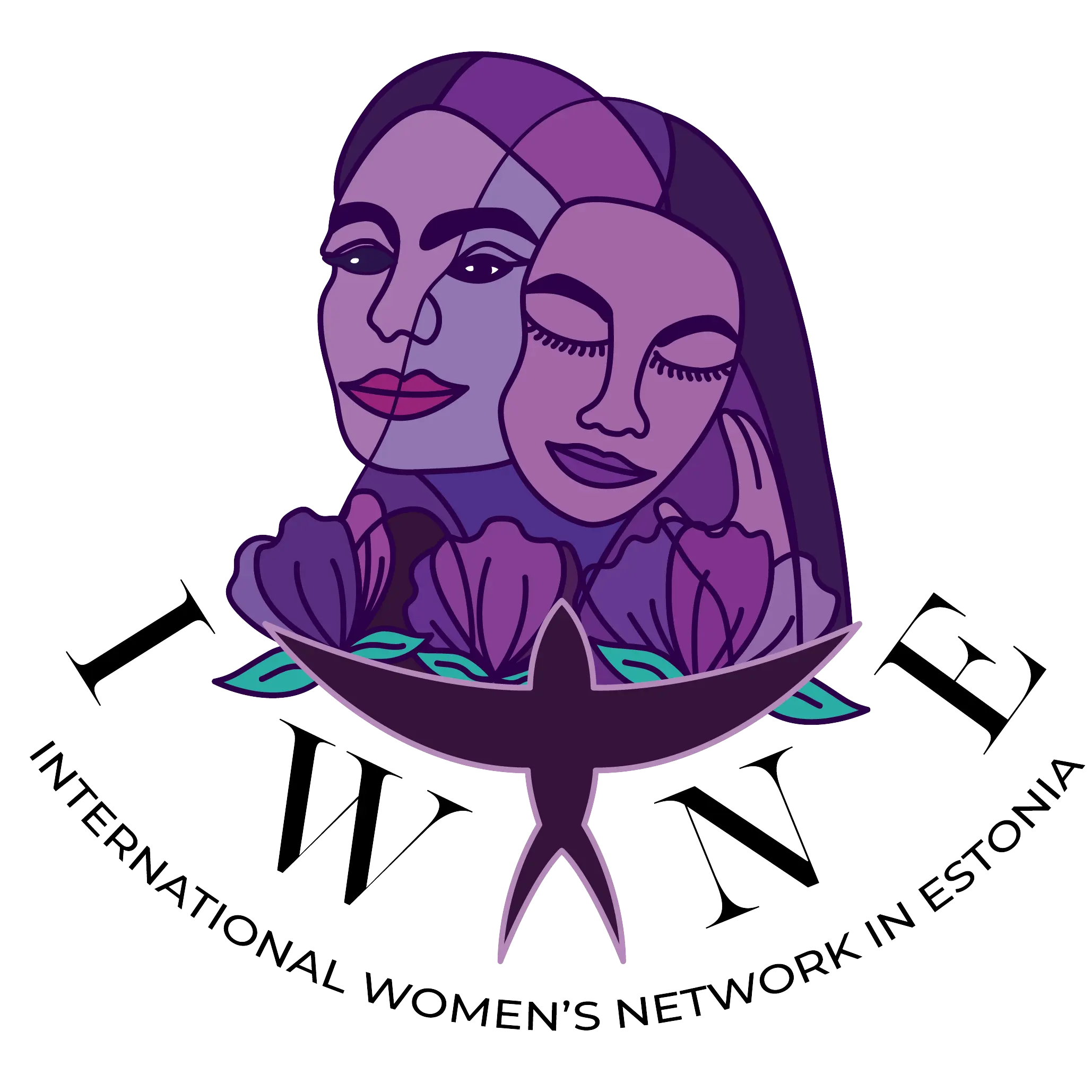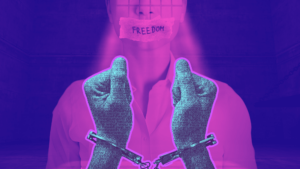In a rapidly globalising world, the flow of migration is increasing. Many people are on the move for several reasons and an unprecedented number of people are fleeing from wars, conflicts, and instability to the places where they seek basic human necessities (Molnar, 2019). States and International Organisations have started to use new technologies such as Artificial Intelligence, machine learning systems, and biometrics to exercise control over migrant populations (Hayes, 2017). Hayes further explains that refugees and asylum seekers are asked to give their biometrics such as iris and fingerprint scans to access food and necessities.
The data collected are stored and have all the information regarding the person’s ethnicity, immigration situation, movements, and financial situation (Hayes, 2017). Access to vulnerable information by the wrong people such as oppressive governments or private sectors may lead to discampment, torture, arrest, and imprisonment (Molnar, 2021). Molnar explains that humanitarian actions generally occur in ill-governed places where data protection and privacy are the lowest priority, and the consequences that already vulnerable people can encounter due to weak implementation of data protection and privacy policies can be vital.
All these discussions bring again the issue of informed consent. Consent is asked from refugees to collect data on them, however, if the consent is given to access their basic needs, then one should question whether the consent given under coercion is a given “consent”. All these challenges are tied to this very question.
New Technologies in Migration Management
It is essential to clarify the key concepts of the new technologies in migration management (Nalbadian, 2022). Defining the conceptual framework of these technologies can be complicated (Molnar, 2021). Terms such as Artificial Intelligence, machine learning systems, predictive analytics, and automated decision-making are often used interchangeably by the definition (Molnar, 2019). These terms are interpreted within the same group of technologies that can learn and are used instead of human judgment (Scherer, 2016).
Big data. Big data is a term to describe large volumes of data that is hard to manage. It refers to data that is also fast and complex which makes it difficult to process using traditional methods (SAS, 2021). To understand what big data is, one needs to understand certain terms that make it ‘big’ data. Big data is not ‘big’ not only because of its volume but also because of its velocity and variety (Favaretto, De Clercq, Schneble, & Elger, 2020). Volume refers to the amount of information that is produced from a variety of sources such as transactions, smart devices, media, and social media, etc (SAS, 2021). SAS explains velocity is the speed at which data is produced and handled and describes variety as the data that comes in various formats including structured, numeric data in traditional databases and unstructured, text documents, emails, videos, etc.
Artificial Intelligence (AI). Artificial Intelligence is defined as machine learning processes that mimic human cognition which can make decisions and deliver outcomes (Schmidt & Stephens, 2019). Describing what constitutes artificial intelligence can be difficult as AI technologies encompass a variety of systems. Thus, AI has become much broader by its definition which makes it difficult to delineate the limits in its description (Nalbadian, 2022).
Machine learning. It is a subset of artificial intelligence that processes information using algorithms in the form of input data to generate output (Gill & Molnar, 2019). An algorithm is a set of instructions: ‘a recipe composed in programmable steps … organising and acting on a body of data to quickly achieve a desired outcome’ (Gillespie, 2016). They learn from ‘big data’ and improve their accuracy over time (Nalbadian, 2022).
Predictive analytics. Machine learning systems are used to make predictions, which are ‘the process of filling in missing information’ by using existing information to deliver information that does not exist (Agrawal, Gans, & Goldfarb, 2019).
Biometrics. Biometrics has been used to determine the identity. In this regard, biometrics delineate measurable physical characteristics or personal behavioural traits to recognize and verify the identity of an individual (Qu, Nosouhi, Cui, & Yu, 2019). This includes facial images, fingerprints, and iris scan samples (Dempsey & Pillitteri, 2017).
Data Collection on the People on the Move
Tracking, surveilling, and controlling migrants and/or marginalised groups are historical. What is new is the use of new technologies in the control of migration that are available to States and International Organisations (Molnar, 2021). The use of these technological innovations in migration management has human rights impacts on refugees and asylum seekers concerning privacy and data protection for several reasons.
AI technologies require a vast amount of data (Lukács & Váradi, 2023). The collection of vast amounts of data will let these systems learn more and initially deliver outcomes with increased accuracy (Soori, Arezoo, & Dastres, 2023). To make predictions on future human behaviour, patterns and associations in large datasets are analysed which Big Data analytics require (Balkin, 2018). International Organisations such as many organs of the UN rely on Big Data analytics (De Backer, 2014). IOM’s Displacement Tracking Matrix system can be given as an example. The displacement Tracking Matrix system monitors people on the move to predict the needs of displaced persons, analyse social media activity, use phone call records, etc (International Organization for Migration [IOM], 2019). In addition, Humanitarian Organisations such as the UN rely on expanding their datasets by collecting data such as biometrics.
Collecting vast amounts of data on refugees and asylum seekers creates human rights concerns. The first issue is with data sharing and access to sensitive data. Refugees and asylum seekers are one of the most vulnerable groups of people among the migrant population. Through humanitarian organisations refugees and asylum seekers are asked to inform them of very sensitive information (Çalık, 2019). Moreover, the use of new technologies means that a large amount of data is collected and kept (Molnar, 2019).
Access to sensitive information may cause serious human rights problems which can lead to arrest, imprisonment, torture, and may sometimes lead to death (Çalık, 2019). It is vital that sensitive information of the most vulnerable group needs to be protected. In this regard, sharing data and access to this information requires more international regulations in terms of privacy and data protection. Çalık further explains that one other problem is that many host countries neither have weak data protection and privacy regulations nor authorities that will enforce them.
While UNHCR takes a quasi-state role in protecting and assisting refugees, it can determine Guidelines. However, refugees also have to comply with the laws of the host country (Çalık, 2019). In this sense more international regulations and governance mechanisms that control data sharing and access, thereby protecting the vulnerable information of refugees and asylum seekers would help to prevent these human rights concerns.
It is important to note that while International Organisations and States turn to use these novel technologies to control migration for mainly security reasons, these systems are making refugees and asylum seekers more trackable (Molnar, 2019). Considering that there are host countries where data protection may appear as the lowest priority, making vulnerable groups more trackable endangers their privacy.
A Critique Of Consent Under Coercion
The collection of vast amounts of data brings the second issue which is consent given by data subjects. In border controls, governmental institutions, refugee camps, and any place where they require data of an individual when these systems are being used such as biometrics, consent is necessary. The use of new technologies on refugees and asylum seekers makes the question regarding consent under coercion more vital. These new technologies are used in places where there are clear power differences that raise issues of informed consent (Molnar, 2019). For instance, in Jordanian refugee camps, there has been an iris-scanning pilot project. According to this new programme, refugees have to give consent for the iris scan to receive their weekly food rations (Access Now, 2021). According to the investigation that IRIN conducted in the Azraq refugee camp, most refugees indicated that such experiments made them uncomfortable, however, they had no other choice but to give consent if they wanted to eat (Savage, 2016).
Furthermore, when biometrics are collected, it is not always clear where biometric data is going and whether data subjects have access to their data (Molnar, 2019). Access to sensitive information by the authorities that can cause harm to vulnerable people creates a human rights concern. According to Human Rights Watch news in 2021, the UN refugee agency collected data improperly from ethnic Rohingya refugees and shared the information with Bangladesh (Human Rights Watch, 2021). Initially, the information was shared with Myanmar to verify people for possible repatriation. The UN failed to obtain the refugees’ informed consent to share their data with Myanmar which is the country that the refugees had fled (Hao, 2018). Access to the biometric database of the United Nations by oppressive governments can result in identifying groups and removing them from encampments (Molnar, 2019).
It can be argued that collecting vast amounts of data, data storage, sharing, and accessing are vitally important and bring huge responsibility and requirements to take it seriously (Noone, 2022). Refugees and asylum seekers are one of the vulnerable groups among migrants. Fleeing from the lands where it is supposed to protect its people due to several reasons such as conflicts, war, and or economic reasons is already a traumatised experience. Arriving at the place where you seek the fundamental rights that are the right to live to be protected may also create human rights concerns by the use of these new technologies in ill-governed places and places where international regulations and governance mechanisms are weak. Thus, especially data protection and privacy of the refugees have to be taken more seriously.
Bibliography
Agrawal, A., Gans, J., & Goldfarb, A. (2019). Prediction machines: The simple economics of artificial intelligence. Harvard Business Review Press.
Access Now. (2021). IrisGuard provides critical support for refugees in Jordan. https://www.accessnow.org/press-release/irisguard-refugees-jordan/
Black, E. (2012). IBM and the Holocaust: The strategic alliance between Nazi Germany and America’s most powerful corporation. Dialog Press.
Çalık, D. (2019). The protection of refugees: Data privacy with the example of UNHCR. https://www.academia.edu/38365547/The_Protection_of_Refugees_Data_Privacy_with_the_example_of_UNHCR
Dempsey, M. N. K., & Pillitteri, V. Y. (2017). An introduction to information security (NIST Special Publication 800-12 Revision 1). National Institute of Standards and Technology. https://nvlpubs.nist.gov/nistpubs/SpecialPublications/NIST.SP.800-12r1.pdf
De Backer, O. (2014, June 16). Big data and international migration. United Nations Global Pulse: Pulse Lab Diaries. https://www.unglobalpulse.org/big-data-migration
Favaretto, M., De Clercq, E., Schneble, C. O., & Elger, B. S. (2020). What is your definition of big data? Researchers’ understanding of the phenomenon of the decade. PLoS One, 15(2). https://doi.org/10.1371/journal.pone.0228987
Gill, L., & Molnar, P. (2019). Bots at the gate: A human rights analysis of automated decision making in Canada’s immigration and refugee system. The Citizen Lab. https://citizenlab.ca/2018/09/bots-at-the-gate-human-rights-analysis-automated-decision-making-in-canadas-immigration-refugee-system/
Gillespie, T. (2016). Algorithm. In B. Peters (Ed.), Digital keywords: A vocabulary of information society and culture. Princeton University Press.
Hao, K. (2018, October 22). Amazon is the invisible backbone of ICE’s immigration crackdown. MIT Technology Review. https://www.technologyreview.com/s/612335/amazon-is-the-invisible-backbone-behind-ices-immigration-crackdown/
Human Rights Watch. (2021, June 15). UN shared Rohingya data without informed consent. https://www.hrw.org/news/2021/06/15/un-shared-rohingya-data-without-informed-consent
International Organization for Migration. (2019). Displacement tracking matrix. https://www.globaldtm.info/
International Organization for Migration. (2020). Migration and COVID-19: A global perspective. https://www.iom.int/sites/default/files/documents/iom-migration-and-covid-19-report.pdf
Lukács, A., & Váradi, S. (2023). GDPR-compliant AI-based automated decision-making in the world of work. Computer Law & Security Review, 50, Article 105848. https://doi.org/10.1016/j.clsr.2023.105848
Molnar, P. (2019). Technology on the margins: AI and global migration management from a human rights perspective. Cambridge International Law Journal, 8, 305.
Molnar, P. (2019). New technologies in migration: Human rights impacts. Forced Migration Review, 61. https://www.fmreview.org/sites/fmr/files/FMRdownloads/en/ethics/molnar.pdf
Molnar, P. (2021). Technological testing grounds and surveillance sandboxes: Migration and border technology at the frontiers. Fletcher F World Aff, 45, 109-130.
Nalbandian, L. (2022). An eye for an ‘I:’ A critical assessment of artificial intelligence tools in migration and asylum management. Comparative Migration Studies. https://comparativemigrationstudies.springeropen.com/articles/10.1186/s40878-022-00305-0
Noone, G. (2022, October 20). The controversial rise of biometric technology among the displaced. Tech Monitor. https://techmonitor.ai/digital-identity/biometrics-safe-data-protection
Parker, B. (2019, February 5). New UN deal with data mining firm Palantir raises protection concerns. The New Humanitarian. https://www.thenewhumanitarian.org/news/2019/02/05/un-palantir-deal-data-mining-protection-concerns-wfp
Qu, Y., Nosouhi, M. R., Cui, L., & Yu, S. (2019). Privacy preservation in smart cities. In D. B. Rawat & K. Z. Ghafoor (Eds.), Smart cities cybersecurity and privacy. Elsevier. https://doi.org/10.1016/B978-0-12-815032-0.00006-8
Savage, J. (2016, May 18). Eye spy: Biometric aid system trials in Jordan. The New Humanitarian. https://www.thenewhumanitarian.org/analysis/2016/05/18/eye-spy-biometric-aid-system-trials-jordan
SAS. (2021). Big data: What it is and why it matters. https://tinyurl.com/4xzxkw6n
Scherer, M. U. (2016). Regulating artificial intelligence systems: Risks, challenges, competencies, and strategies. Harvard Journal of Law and Technology, 29(2), 354–400.
Schmidt, N., & Stephens, B. (2019). An introduction to artificial intelligence and solutions to the problems of algorithmic discrimination. Computers and Society, 130–144. https://arxiv.org/abs/1911.05755
Soori, M., Arezoo, B., & Dastres, R. (2023). Artificial intelligence, machine learning, and deep learning in advanced robotics: A review. Cognitive Robotics, 3, 54–70. https://doi.org/10.1016/j.cogr.2023.04.001
UNHCR. (2015). Innovative identity management system uses biometrics to better serve refugees. https://www.accenture.com/t20161026T063323Z__w__/us-en/_acnmedia/Accenture/Conversion-Assets/DotCom/Documents/Global/PDF/Dualpub_15/Accenture-Unhcr-Innovative-Identity-Management-System.pdf
U.N. (2021). The global compact for migration: A UN-led framework to address international migration in a holistic and comprehensive manner. https://www.un.org/development/desa/dspd/2021/01/the-global-compact-for-safe-orderly-and-regular-migration/















